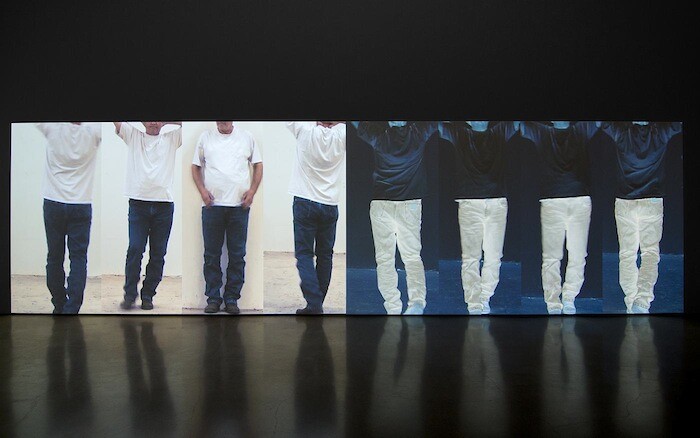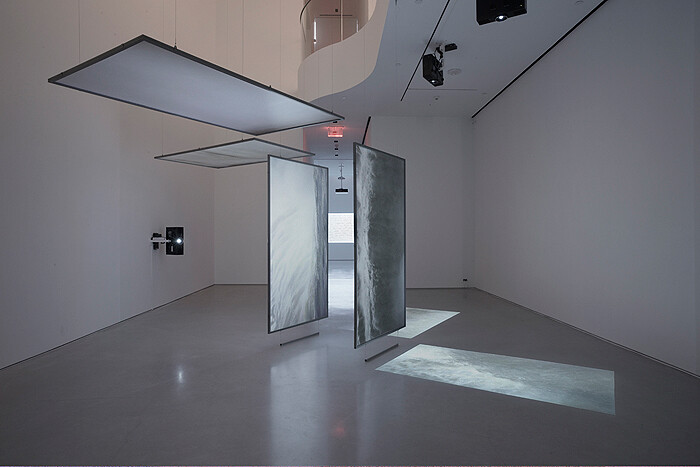Categories
Subjects
Authors
Artists
Venues
Locations
Calendar
Filter
Done
November 1, 2016 – Review
Bruce Nauman’s “Contrapposto Studies, i through vii”
Kim Levin

He was considered a lightweight in the early days of post-minimalism but for decades Bruce Nauman has been praised as one of the most wildly influential artists of our time. His video performances with the sounds of their own making hover between tedium and enthrallment, banality and profundity, repetition and distortion. Nauman’s art probes the failure of language and the betrayals of the body and what used to be known as “the eternal verities.” One Hundred Live and Die (1984), his huge flashing neon wall piece at the Benesse House Museum on the Japanese island of Naoshima, proclaims a litany of one hundred oxymoronic alternatives: “LIVE AND DIE, LOVE AND DIE, SHIT AND DIE, PISS AND DIE, EAT AND DIE, SLEEP AND DIE, HATE AND DIE,” and their opposites, “EAT AND LIVE, SLEEP AND LIVE, LOVE AND LIVE, HATE AND LIVE.” His Clown Torture video installation (1987) is as excruciating to listen to as it is to watch. Nauman’s art goes straight to the crux of the human condition.
One of his best-known early video performances is Walk with Contrapposto (1968), in which the young Nauman sashayed back and forth along a narrow corridor, swinging his hips from side to side.(1) …
November 23, 2012 – Review
Kutluğ Ataman’s “Mesopotamian Dramaturgies”
Arnaud Gerspacher

If you’re overly tapped into art world tropes or academic hotspots, it’s tempting to think that there would be little new to offer in the archival impulse, in interrogating documentary conventions, or in playing with the effects fictions have on the facts. But like Harun Farocki, Amar Kanwar, or Omer Fast, Kutluğ Ataman does it so well you end up reconsidering those knowing prejudices you carried into a gallery. Ataman’s current show at Sperone Westwater, featuring four works from his “Mesopotamian Dramaturgies” series, is a case in point: through subtlety, craft, and humor—edged by formal and conceptual rigor—his approach demonstrates that well-worn strategies are not inherently exhausted and that our discourse is as coerced by the detracting force of cliché as any other.
Mayhem (2011) comes first. The seven-channel video installation is a multiplied and vertiginous view of the massive Iguazu Falls, specifically the area known as the Devil’s Throat, between Argentina and Brazil. Each video is a close-up of cascading torrents of water foaming, pouring, and crashing in on themselves from various angles. Ataman calls this work his direct response to the Arab Spring, describing the water as both a violent and cleansing force. This response is deeply ambiguous. The …